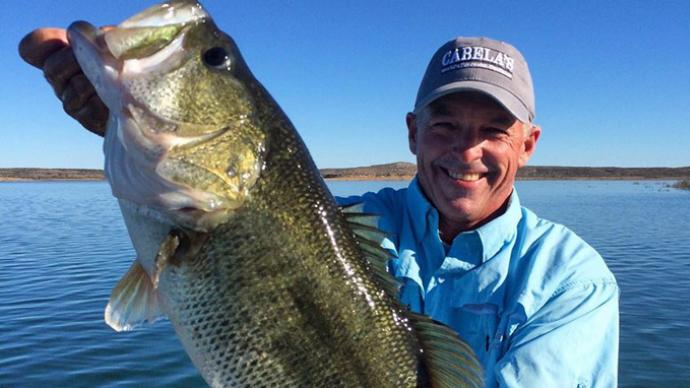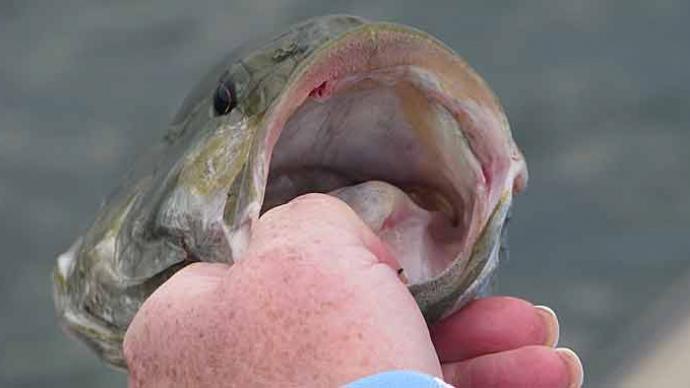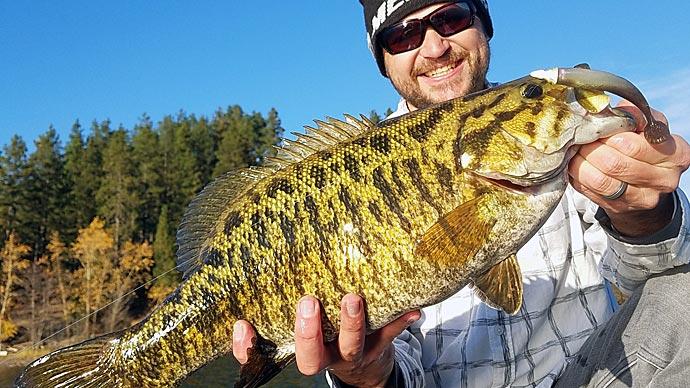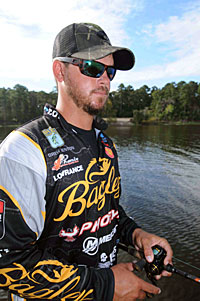
Living in the South has given Drew Benton plenty of opportunities to become an expert on sight fishing for bass.
“Being from (Florida), it seems like we have a lot longer spawning season than anywhere else in the country, so sight fishing has to be a tool in our bag of tools to be successful,” Benton says. “It is just one thing that I have been proficient at, and I have a lot of confidence whenever I do that.”
The Bassmaster Elite Series pro is also a “big hunter,” which is another reason he enjoys sight fishing. “It is the ultimate combination of hunting and fishing,” he says. The Florida pro visually hunts for bass first and then fishes once he finds the bass on a bed.
“I also like the aspect that every fish is a different puzzle with a new personality, so you have to read the fish to figure out what makes it tick and where to set up on it,” Benton says. “I like figuring that out.”
A good pair of sunglasses is essential for hunting for bedding bass and fishing for the bass on the beds. Benton relies on Costa Del Mar sunglasses and opts for various lens colors depending on the conditions. He uses amber lenses for average sunny days, but switches to sunrise or yellow lenses for cloudy days, early morning light, or stained to murky water. He swaps back and forth between smoke and amber lenses on bright, sunny days. “What that does is it forces your eyes to adjust,” Benton says. “Since I am looking intently and studying the water all day, it puts a strain on my eyes and can give me a headache. If I swap those lenses out every two or three hours, it makes my eyes readjust and takes the stress off them, so I don’t get those headaches.”
The 2016 Bassmaster Elite Series Rookie of the Year can sight fish proficiently in clear or off-colored water. “It doesn’t have to be very clear, but the less clear it is, the more you have to focus on the conditions,” Benton says. “If it is a little bit stained, you have to have calm, sunny conditions, or else it is pretty much out of the question. As long as I can see the bottom or at least see bottom shades, I can sight fish.”
Sunny, calm weather with a slick water surface are the ideal conditions for sight fishing. “Sometimes if it is super, super clear, it doesn’t hurt to have a little bit of ripple just to help kind of cover you up and the trolling motor noise and things like that,” Benton says. Benton usually backs out his boat in calm, sunny conditions a little farther from the bed.
The section of the country he is fishing determines whether Benton hunts the shallows for actual bass or beds. In Florida, he looks for shiny spots where bass have fanned out beds in the sand. Benton searches mainly for bass instead of shiny spots when fishing the Midwest where bass spawn on pea gravel or logs. During this year’s Bassmaster Classic at Lake Conroe, Benton found bass spawning on dark spots rather than shiny spots.
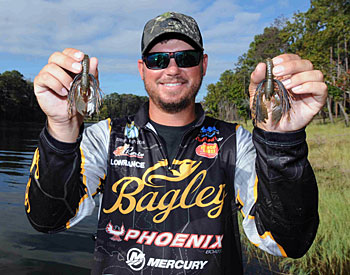
After locating a bed or the nesting fish, Benton positions his boat, so the sun is behind him, which he believes prevents the fish from seeing him since it has to look into the sun. He also tries to put some grass, a dock, or any other type of obstacle between him and the bass to prevent the fish from getting a look at him. “You are trying to make that fish feel very comfortable up on the bed, so you want to be covered up as best as you can,” he says. Then he deploys his Power Poles anchoring system to hold his boat in place and eliminate trolling motor noise.
Judging bass on the beds is Benton’s next step in his sight fishing technique. “If it is a female and a male (on the bed), I look to see if they are interacting and rolling with each other or if he is sitting up there or she is just sitting up there,” Benton says. “I try to figure out if she has already laid eggs or what stage they are in. But the main thing I look for the first or second time I pitch that bait in is what that fish does. Does it take off and leave and take 10 minutes to come back? Does it whirl around on the bait real quick? Does it react to a certain place when the bait hits that place?”
“A lot of times, there is a little place about the size of the palm of your hand where they want to sit, and you need to find that spot,” Benton says. The Florida pro watches a bass’ fin movement to determine where the hot spot is in the nest. If the lure hits a spot and the bass’s fins start moving more, Benton knows he has found the hot spot and starts saturating his lure on that location.
Benton’s favorite lure for sight fishing is a Tightlines Hy-Brid UV Whiskers plastic craw. “The bait is compact enough that when you put a 4/0 or 5/0 hook in it, a fish can’t bite the bait without getting the hook in its mouth,” Benton says. The compact bait prevents a bass from being able to blow, nip or pick up the lure's tail to remove it from the nest without getting hooked.
Benton also likes the skirt of the Hy-Brid Whiskers craw because it generates plenty of action when he shakes and moves it around in the nest. “I can make that bait just sit there in one place and shake my rod tip, and it always has that creepy crawly action,” he says.
The sight fishing expert relies on natural colors such as green pumpkin and bluegill- or crawfish-imitating hues for his Hy-Brid Whiskers craw. He often switches back and forth between natural colors and white or other bright colors to see which the fish prefer. If he notices a bass has opened its mouth on his craw in a natural color, he will switch to a white craw so he can see the lure better on the bed.
Benton has to pitch the craw on top of the bed if he finds bass in holes of lily pads or other vegetation. However, he tries to pitch past the bed into open water to prevent spooking the fish.
When Benton notices a bass will stay on the bed and “nose down” on his lure, he tries to rile it by popping up the craw with a hard jerk of his rod. “If that fish flares its gills or opens its mouth just for a second, it is only a matter of time before you hook that fish,” Benton says. He then keeps tempting that fish with his craw until he makes it bite.


